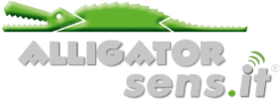TPMS - Tyre Pressure Monitoring Systems
Technical background and solutions
Tyre pressure monitoring systems (TPMS) are systems that are integrated into vehicles and constantly monitor the tyre pressure. If there is a loss of pressure in one or more tyres then the driver is informed directly via a display or a warning light. A distinction is made between direct and indirect systems:
Indirect systems
In an indirect system the loss of air is determined by the ABS or transaction sensors that are built into the vehicle. When changing tyres, the alternative that is much simpler and cheaper is the indirect system, because it is not necessary to use TPMS sensors and you do not have to worry about anything being new when selling and installing mounted wheels. However, it can be the case that an indirect system needs to be recalibrated after a tyre change.
Direct systems
In a direct system the air pressure in the tyre is monitored by the sensor that is built into the wheel. This information is sent by radio to a controller in the vehicle. The information for the driver is shown on a display of the onboard computer. A direct system entails higher costs when changing tyres: The installation of the sensors is done with a special tool with a preset torque and special equipment units and programs are required to read the sensor data and teach-in the sensors, etc.
Types of sensor
OE sensors
These are the same as the sensors that are provided as original equipment. The software protocol of the corresponding vehicle has already been installed. We can offer you sensors from makers Schrader, Huf Beru and VDO. We can cover a large proportion of all relevant vehicles with these.
Universal sensors
This involves an unwritten sensor to which a protocol for a particular vehicle can be transferred. After that the sensor can be handled just like an OE sensor. Here we can offer you sensors from the current makers Alligator (SensIt), Schrader (EZ) and CUB to likewise be able to ensure the greatest possible coverage. We supply universal sensors that have already been preconfigured for the relevant vehicle. It is most important that you inform us of the exact vehicle data (make, model,type and year).
Multi-application sensors
These are likewise universal sensors, but certain protocols for various vehicles have already been preloaded. The sensor does not need to be reprogrammed but instead only the corresponding protocol for the vehicle in question need to be activated.









